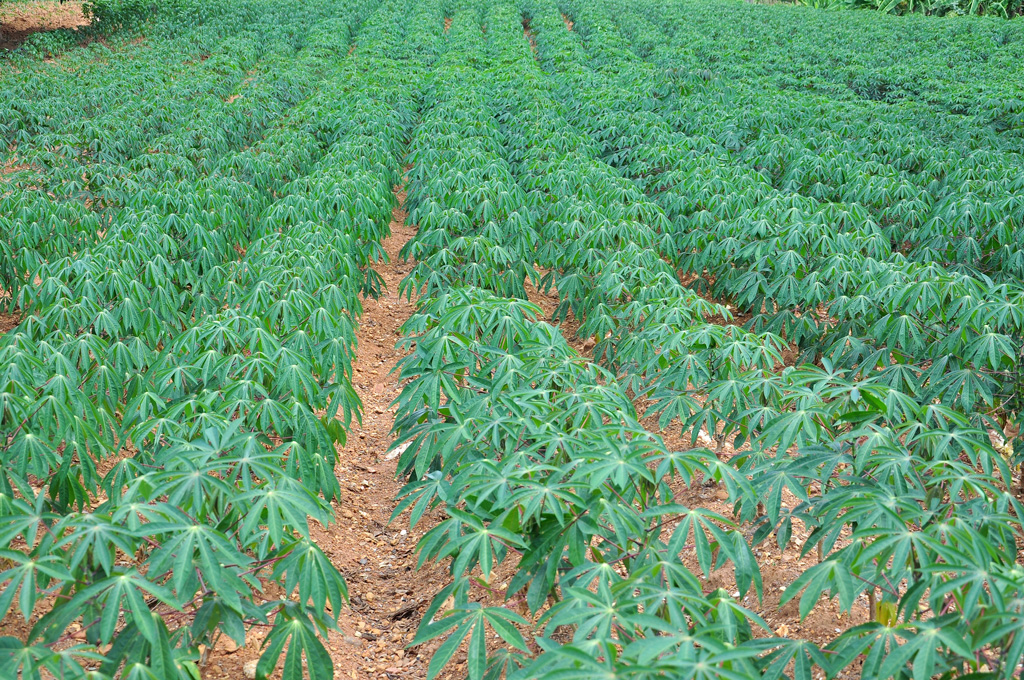 A decision by 12 women to embrace cassava cultivation after the 1990s war in North Eastern Uganda has turned the region into a commercial cassava growing area, with the group being the lead supplier of cassava flour to Britannia.
A decision by 12 women to embrace cassava cultivation after the 1990s war in North Eastern Uganda has turned the region into a commercial cassava growing area, with the group being the lead supplier of cassava flour to Britannia.
In mid 1990s during the period of insurgencies fuelled by rebel activities in the Northern and Eastern regions of Uganda, women and children were the most vulnerable with many left homeless and fields of millet, sorghum, simsim and groundnuts all destroyed by the rebels. In order to pick the broken pieces, the women embraced the only available resource at their disposal; cassava cuttings which were supplied to them by the government through the ministry of agriculture.
“We were not used to doing cassava and therefore many of the farmers were cagey on its adoption but we spearheaded its cultivation in the area. Unfortunately, the drought that ensued during that season saw all those who had rejected the crop subjected to a calamitous hunger,” explained Norah Asiyo who is the founder of the now successful Popular Knowledge Women’s Initiative farmer’s cooperative society (PKWI). The fact that cassava is a stress resistant crop safe guarded it from the strains of drought and ensured that the farmers who had embraced it, had food to rely on while hunger loomed.
The stress resistant traits of cassava crop then saw more farmers embrace the crop after the hunger nightmare. More farmers adopted the crop and ultimately the yields began exceeding the local consumption. According to Asiyo, in order to ensure that their bumper harvests were not wasted, they had to devise value addition models that would best fit their locality of Bukedea and Moroto districts.
Having attended high profile international agribusiness trainings and workshops, the mother of four advised the members of the farmer group to adopt cassava flour milling which according to her was a more sustainable value addition venture and would be marketable even beyond their localities. “Milling was ideal because it was more marketable. In addition, the emergence of Cassava Mosaic Disease in 1995 saw the introduction of other cassava varieties that were more disease resistant albeit heavily laden with cyanide content and posed a risk to farmers if not well processed hence the consensus on the milling of flour as the most viable option,” she explained.
After initial pitfalls with quality issues, the group got a marching grant to purchase the much needed machineries for high quality production of cassava flour. “In mid 2000s we got funding from Cassava Value Addition for Africa (CAVA) and acquired the much needed machineries worth about UGX6,000,000 (Kshs200,000).
Currently the group comprised of over 2500 women farmers produces about 1.3 tonnes of cassava flour weekly. This output is way below the market demand. “Due to the improved quality of our cassava flour, we have seen increased demand for it with the likes of huge corporate firms developing a huge interest in it. Britannia alone requires a supply of about 2 tonnes per week which currently we can’t deliver due to our inadequate drying racks and space although we are working hard to set up more racks,” explained Asiyo.
In order to ensure high quality, the farmers are advised to dry the cassava on raised racks above the ground. The farmers are already enjoying the benefits of high quality products with Britannia purchasing a kilo of the flour at about UGX1,500 (Ksh50) a price that is very lucrative as opposed to UGX 600 which s the retail price offered in the local market.
The installation of the cassava value addition milling plants in the area has transformed the farmers from subsistence to commercial cassava growers. PKWI Cooperative group own the plant and members are charged about 100 for the value addition process per kg which caters for the logistical costs like peeling the cassava, diesel fuel to run the machineries among others.
Non members are charged about UGX200 and Asiyo noted that more farmers are adopting the crop for the now visible high returns that it promises. On average individual farmers have cultivated about 5 acres of land of cassava and we are now even controlling the new membership in order consolidate the team that we have.
About 600 million people in Africa, Asia and Latin America depend on the cassava crop for their food and incomes. In Africa cassava production has more than tripled since 1961 from 33 million tonnes per year to 101 million tonnes. Asiyo explained, “Cassava is a year-round crop, with production levels that are steady but small. It is also a perishable and bulky product, which makes it very costly to transport without some initial processing and this explains why we are initiating value addition activities at the village level a fact that will help more cassava adoption and ultimately help in food security in our area.”
















Comments powered by CComment